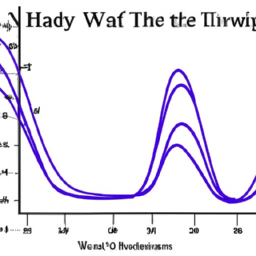Understanding Elliott Wave Theory: A Comprehensive Guide to Market Analysis

Understanding Elliott Wave Theory: A Comprehensive Guide
Introduction
The Elliott Wave Theory is a popular technical analysis tool used by traders and investors to predict future price movements in financial markets. Developed by Ralph Nelson Elliott in the 1930s, this theory suggests that market trends follow repetitive patterns, which can be identified and analyzed to make informed trading decisions.
The Basics of Elliott Wave Theory
At its core, the Elliott Wave Theory is based on the belief that market prices move in waves, influenced by investor psychology and market sentiment. These waves can be classified into two main types: impulse waves and corrective waves.
Impulse Waves
Impulse waves, also known as motive waves, are the main directional waves in a market trend. They consist of five smaller waves, labeled as 1, 2, 3, 4, and 5. Waves 1, 3, and 5 move in the direction of the overall trend, while waves 2 and 4 are counter-trend corrections.
Corrective Waves
Corrective waves, as the name suggests, are waves that correct the price movement of impulse waves. They consist of three smaller waves, labeled as A, B, and C. Wave A is a counter-trend move, followed by wave B, which is a partial retracement of wave A. Finally, wave C completes the correction and moves in the direction of the overall trend.
The Elliott Wave Principle
The Elliott Wave Principle provides guidelines for identifying and interpreting these waves. According to the theory, impulse waves and corrective waves alternate in a specific pattern. After completing a five-wave impulse wave, a three-wave corrective wave follows, forming a complete cycle.
Applying Elliott Wave Theory
While Elliott Wave Theory can be complex, understanding and applying it can provide valuable insights for traders and investors. Here are some steps to get started:
Step 1: Identify the Trend
The first step is to identify the overall trend in the market. This can be done by analyzing price charts and looking for higher highs and higher lows in an uptrend, or lower highs and lower lows in a downtrend.
Step 2: Identify Impulse Waves
Once the trend is identified, look for five-wave patterns in the direction of the trend. These waves should be labeled as 1, 2, 3, 4, and 5. It’s important to note that each of these waves can be further broken down into smaller waves.
Step 3: Identify Corrective Waves
After an impulse wave is complete, a three-wave correction follows. Look for waves labeled as A, B, and C, which should move against the direction of the trend. Wave C should move in the direction of the trend, indicating the completion of the correction.
Step 4: Confirm the Pattern
Once the waves are identified, it’s crucial to confirm the pattern. This can be done by analyzing other technical indicators, such as Fibonacci retracement levels, moving averages, or volume patterns. The confirmation helps validate the accuracy of the Elliott Wave analysis.
Conclusion
The Elliott Wave Theory is a powerful tool for technical analysis, providing insights into market trends and potential price movements. While it requires practice and experience to master, understanding the basic principles and applying them diligently can enhance trading decisions and improve overall investment strategies.